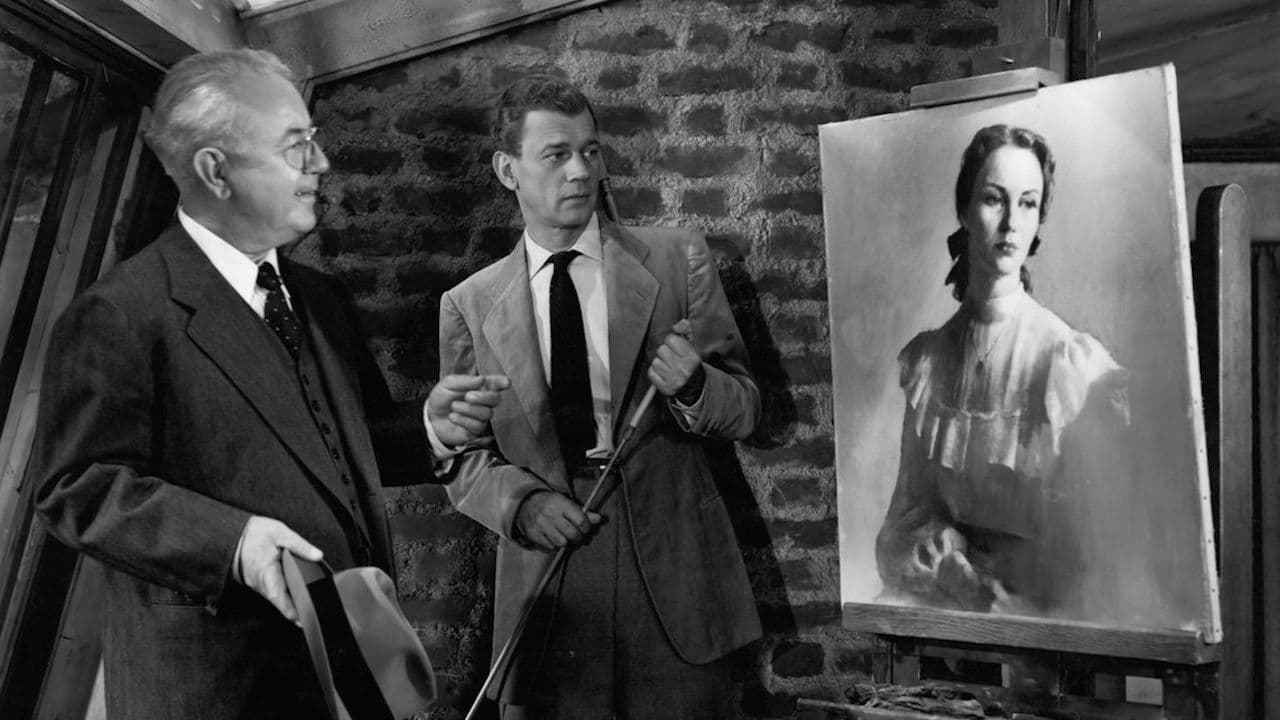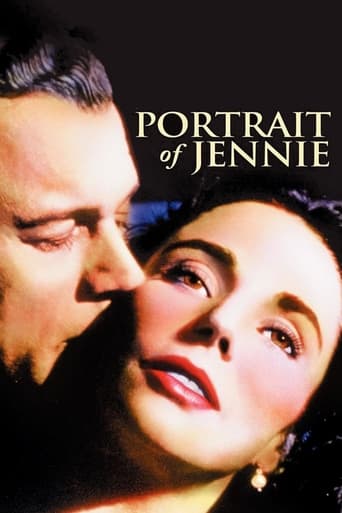

The film opens with Twilight Zone vibes, giving the idea that we are going to watch a ghost story of unconventional type.Then enters 30 year old Jennifer Jones dressed as a child and the movie turns into a creepy farce. Jones was David O. Selznick's wife and an A list actress, thanks to her marriage. Or at least, being married to the mega-producer did not hurt a bit her career. She was also a good looking woman, and reading some reviews seems like reviewers are mostly impressed by her looks.However, I just cannot overcome the feeling of creepiness and the absurdity of a grown-up woman dressed up as a child, with virginal clothes and braids, meeting a man and sort of seducing him. Joseph Cotten plays the artist fascinated by the creepy child, who is just waiting for her to be old enough so that they can be properly lovers.... Or something along those lines.Highly disturbing stuff and I really do not understand how this sort of story can be seen as "romantic" (maybe for the pedophiles) or "hunting" (unless you are into mature women who dress up like children and men with OCD).
... View MoreDaid O. Selznick struck Hollywood good with his four hour 1939 technicolor GONE WITHE THE WIND and his two hour 1949 black and white RECBECCA. Eight years later he made PORTRAIT OFJENNIE on the parallel dark brooding supernaturally tinged premise to REBECCA which lasts only 86 minutes the first hour in nblack and white the remainder switching from green monochrome to techicolor. Ethel Barrymore in a lead role and Lillian Gish coming out of retirement for a considerable length cameo continue his tradition of producing Hollywood gold. The choice of Joseph Cotten in the central role and Florence Bates in a cameo lends merit to the film. The film was originally shown in a not working well prelude to cinemascope called Cyclorama which was abandoned quickly and is not available in modern cablecasts or DVD. Jennifer Jones was his chosen bride and star of the era who can be beautiful in finery and cosmetics but plays for much of the film a little girl dressed down. Her vocal shortcomings would not be worth stardom today. Her sound track comes out less than satisfactory on modern cablecast and DVD.
... View MoreThis movie takes a romantic notion and makes it creepy. The idea that if two people are meant to be together neither distance nor time can separate them is lovely, but using the adult actress as the young child when the couple first meets is so creepy. That's the word that kept coming to me as I was watching this movie, creepy, creepy, creepy.Jennifer Jones is an adult playing a child when Joseph Cotton's character first meets her and the voice she uses and the song she sings are so creepy. Her being an adult playing a child (not clear on the age but definitely pre-teen years) and having this man be obsessed with her is just disturbing. If they had cast a little girl that looked like her, there still would have been a pedophilia element, I guess, but it would have been easier to believe he didn't have sexual feelings about her than it is when she is obviously an adult on her knees. Ick. Even better, why not have him first meet her when he is a child. The child version of her could have come to him when he was a child. That would have been so much better.Even if you can get past the hints of pedophilia, the movie is still mawkish. The music and the voice-over are so sappy and melodramatic. So, it is both creepy and syrupy.Now, for the good stuff. Ethel Barrymore is excellent. The special effects are fun. I think I jumped at the lightning. The shot of the spiral staircase is lovely and eerie. The canvas effects are fun at first but get tiresome. I always enjoy Joseph Cotten, and I guess I'm glad I watched it.
... View MoreFrom info about "Somewhere In Time", I was compelled to watch "Jennie". In SIT, Richard fell in love with a woman in a portrait. In "Jennie", Eben painted a woman in a portrait. In SIT, a man traveled to the past to find the woman. In "Jennie", a child/woman traveled to the future to, oh I don't know, obsess about growing up and marrying a man who was now an adult. She was, I thought, stalking Eben, and constantly reassuring him that she was "hurrying" -- growing up a few more years during several occurrences over a several month period in the present time (1934?). There seemed to be a plot gap that since she was always obsessing about Eben, it was later in the movie that Eben finally decided he wanted to marry her, too, and that she was his star-crossed partner-to-be. In SIT, Richard was a never-married playwright. In "Jennie", Eben was a never-married painter. Both men were artists. In SIT, Richard died in the end, being united in heaven with the woman. In "Jennie", Eben almost died in the end.I wondered if Miss Spinney was Jennie. I also wondered about Sister Mary being Jennie. We saw Spinney throughout the movie, yet after waiting a long time I finally saw Lillian Gish closer to the end. Neither one was Jennie, apparently. Both women appeared to have supernatural knowledge abilities, and I intuited clues that each of them knew way more about Jennie than they let on. At least, I hoped so. Even Spinney's partner had such a twinkle in his eye that I thought maybe he knew way more about Jennie than he let on. Maybe the partner and Spinney created the whole illusion of Jennie, in order to create Eben's great future as a painter. Who knows? They could have been ghosts of Jennie's parents (acrobat artists who had been killed on the high wire together at Hammerstein's Victoria).The thing is, Miss Spinney was played by Ethel Barrymore. Ethel was the friend of Maude Adams, the turn-of-19th-Century-actress portrayed as the portrait-woman Elise McKenna in "Somewhere In Time". Ethel and Maude were accomplished stage actresses as young women (Ethel born in 1879 and Maude born in 1872). They worked for the same manager, Charles Frohman, portrayed as William Fawcett Robinson in "Somewhere In Time". Frohman was also portrayed by Dustin Hoffman in "Finding Neverland".Ethel Barrymore (sister of John and Lionel Barrymore) was the great-aunt of Drew Barrymore.
... View More